Four
READING, ’RITING,
AND ’RITHMETIC
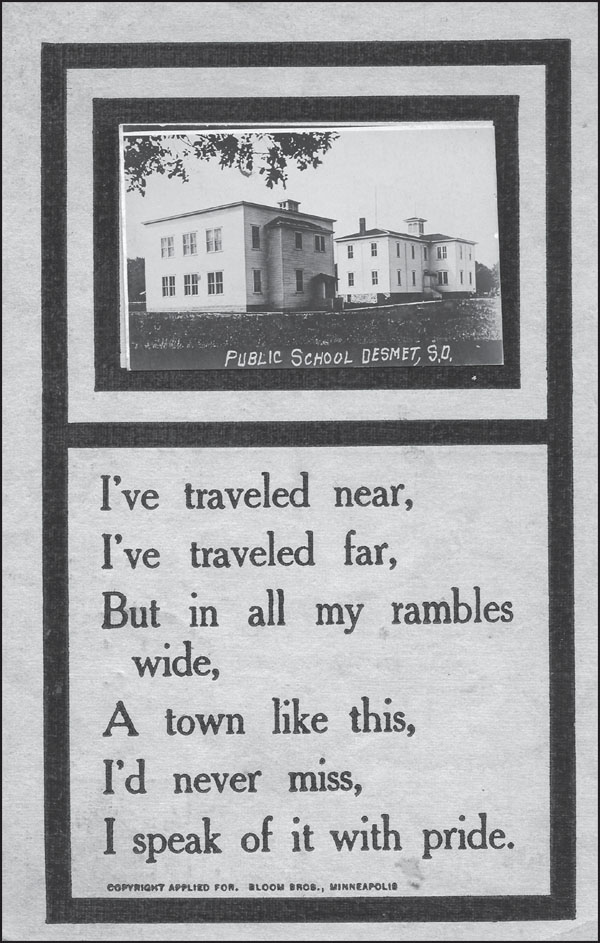
A common bond among the people of De Smet was their desire for education. With the typical settler’s brand of energy and optimism, the first one-room schoolhouse was built. The ensuing years brought the construction of larger wooden buildings and, finally, a substantial brick building. Reading, writing, and arithmetic were elevated to the highest standards in the community.
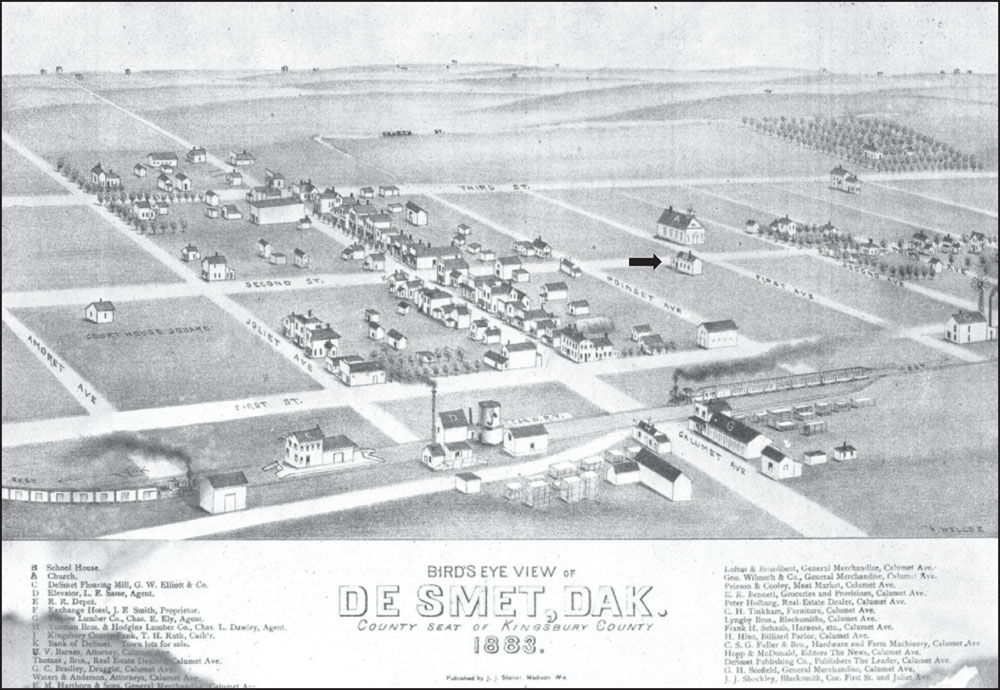
The one-room schoolhouse is a true American tradition. A solitary sentinel (see arrow) in De Smet, it stood on the corner of Second Street. In 1880, materials and labor for the schoolhouse were furnished by De Smet citizens, including C.H. Tinkham and A.N. Waters. It was later moved to Third Street and became a private home. Today, it can be seen on the premises of the Laura Ingalls Wilder Memorial Society.
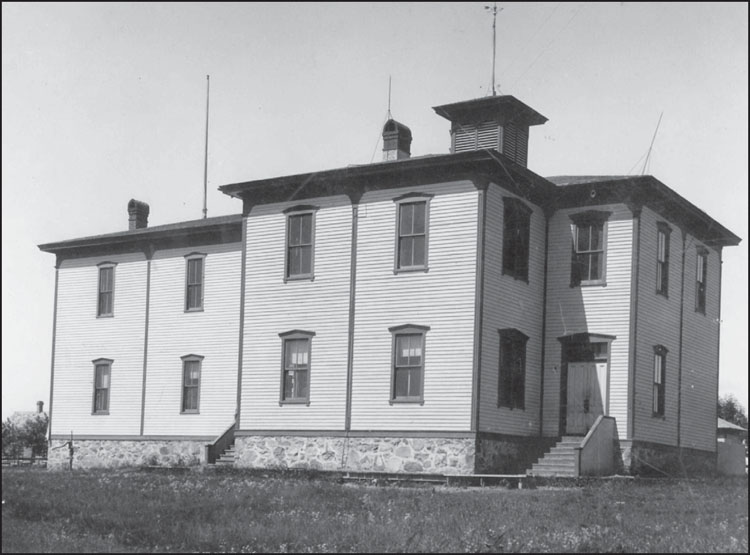
Few recall this two-story, wooden school building that stood majestically on Third Street. The first graded school was dedicated on New Year’s Day 1885. As seen in this picture, it had an annex added to the south to provide two more classrooms.
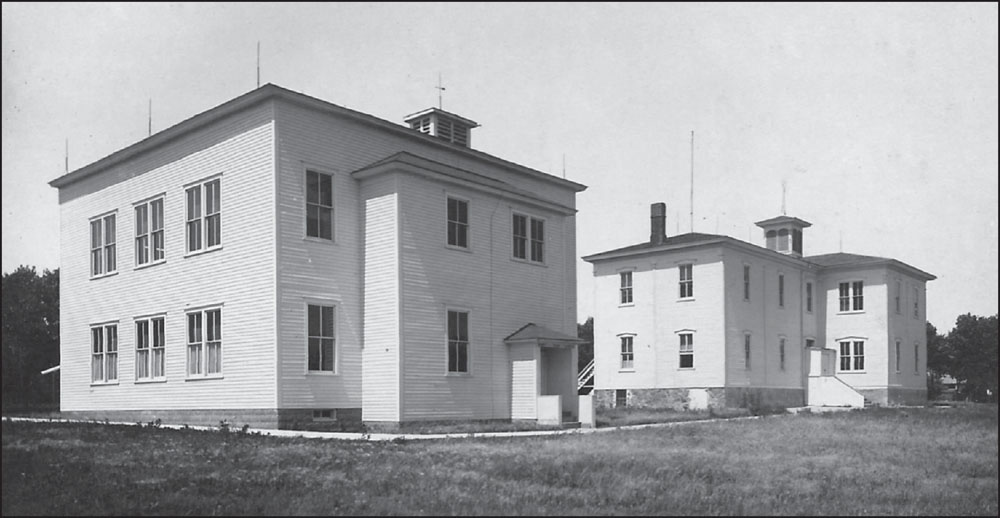
A separate building, standing to the left of the original school (furthest right), was constructed in 1908 for high school students. The grade school was moved to this building in 1922, when the new brick junior-senior high school building was erected.
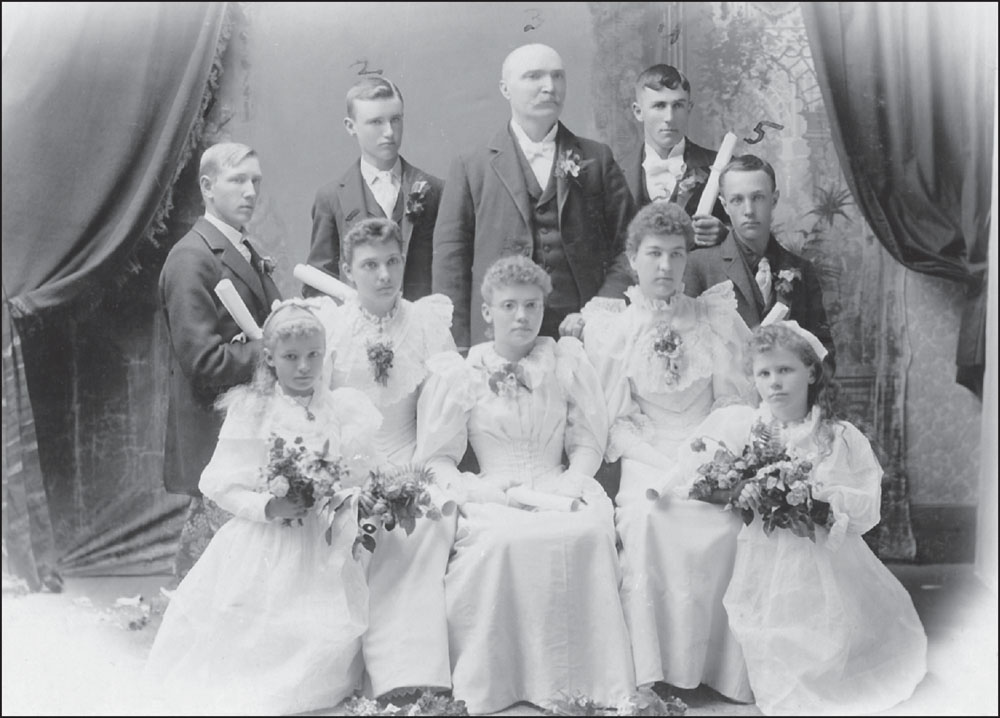
Graduating was not only a milestone, but almost a privilege, as many pioneers did not graduate from high school. Members of this graduating class had honors bestowed on them at the opera house on May 25, 1894. This photograph includes, from left to right, (first row) unidentified, Nellie Richardson (Tackaberry), Mattie Sleeper, unidentified, and Fanny Coulter; (second row) M. Whaley, ? Crothers, ? Farrel, L. Callahan, ? Sherman. Edna Robinson may be one of the unidentified ladies.
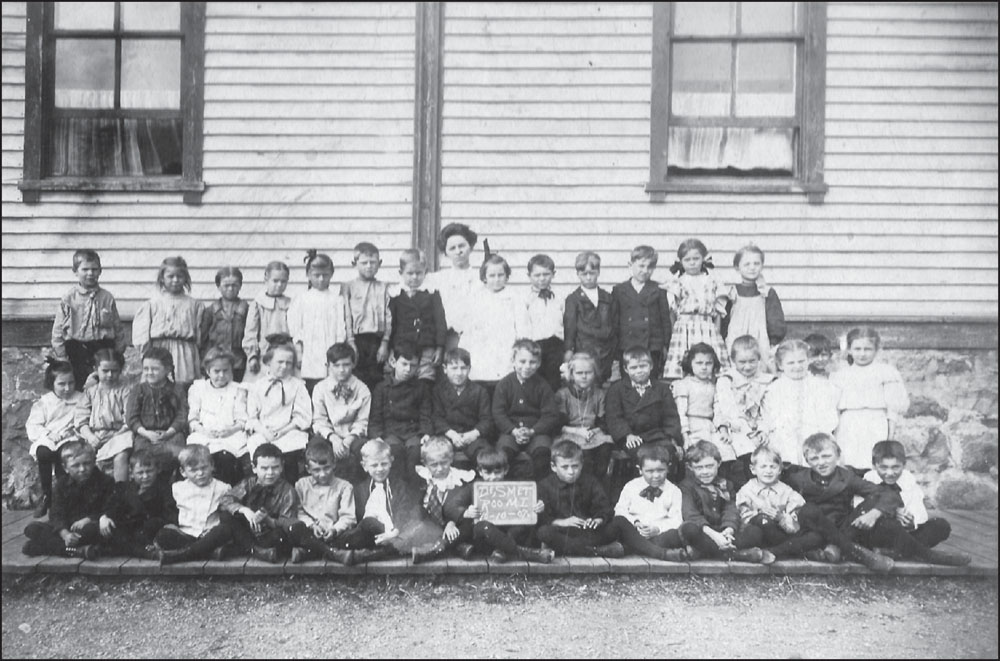
The pupils and teacher in Room I of De Smet’s 1907 school proudly pose for this picture outside the wooden schoolhouse on Third Street. The room was kept cool in the warm months with an open window, curtains billowing in the wind.
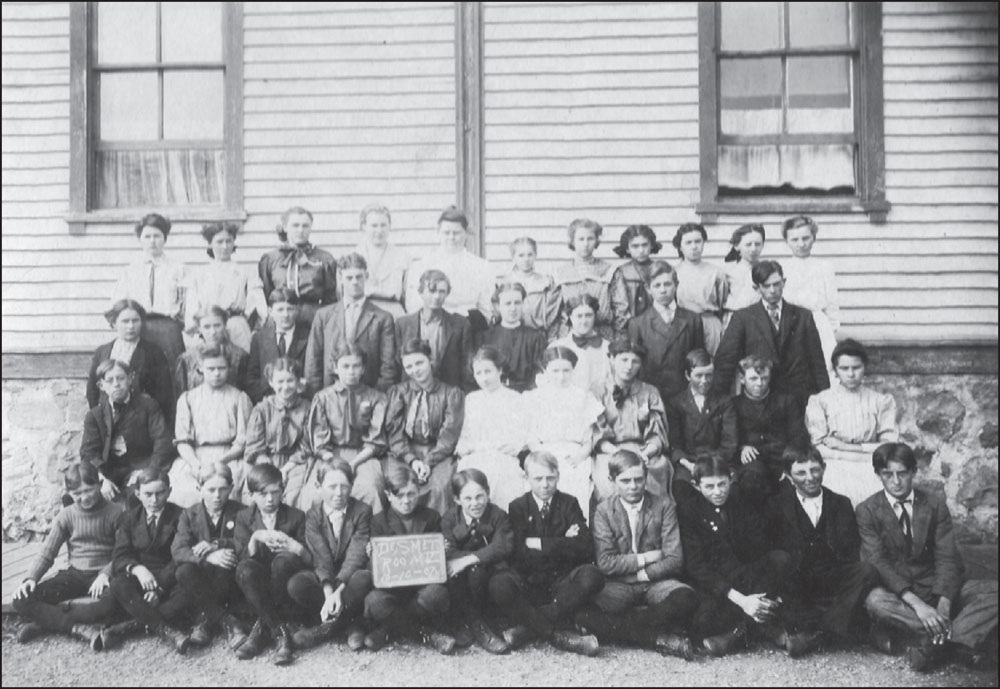
Suit jackets, knickers, high collars, and long skirts were the styles of the day. Students in Room V seemed to have dressed for the occasion of taking this picture on October 10, 1907.
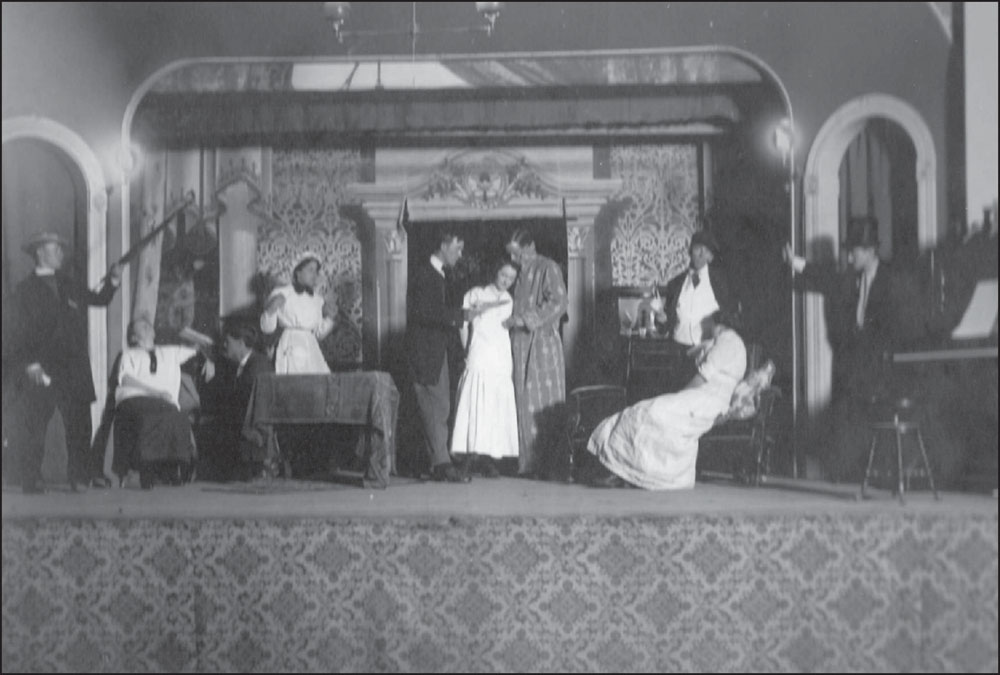
Nat Stimson and Aubrey Sherwood appear in the cast to present a class production performed in Couse’s Opera House by De Smet’s class of 1912. Patrons could attend by ascending a set of steps on the north side of Couse’s building. Ward’s Store and Bakery now occupy the Couse Building on the corner of Calumet Avenue and Second Street.
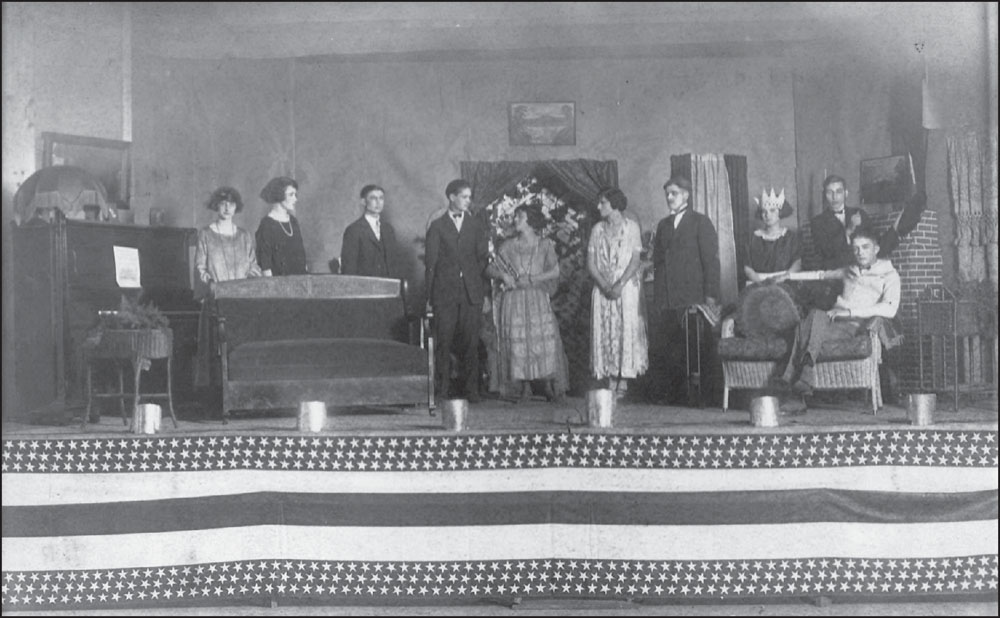
Seemingly relaxed in front of the tin can footlights, this cast appeared in a 1925 production at the opera house. This show was directed by none other than Laura (Engebretson) Sherwood, the wife of Aubrey Sherwood.
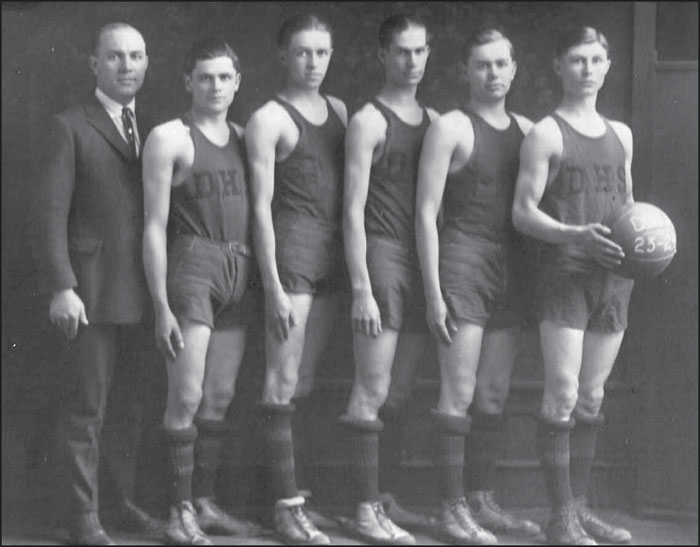
This photograph of the 1923–1924 De Smet team includes, from left to right, Coach Itzen, Fay Smity, Kermit Buchele, Fay Munger, Ray Ely, and Oscar Myre. “DHS” appears on the shirts, and the basketball has “DHS 23–24” written on it.
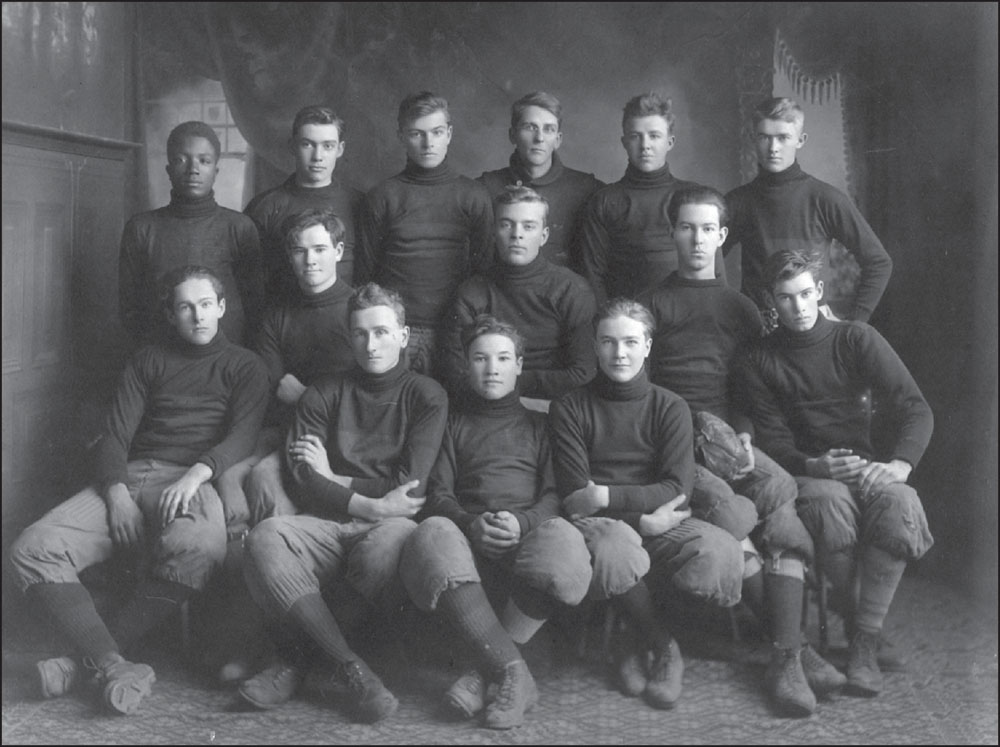
This nearly pad-free football team played for De Smet High School in the 1914–1915 season. Pictured, from left to right, are (first row) Harold Krumviede, Don English, Dewey Keating, Walter Gredew, and unidentified; (second row) Merle Keating, Loyd Hoyt, and unidentified; (third row) George Lark, Vic Basart, Uffe Knudson, Superintendent/Coach Lund, unidentified, and unidentified.
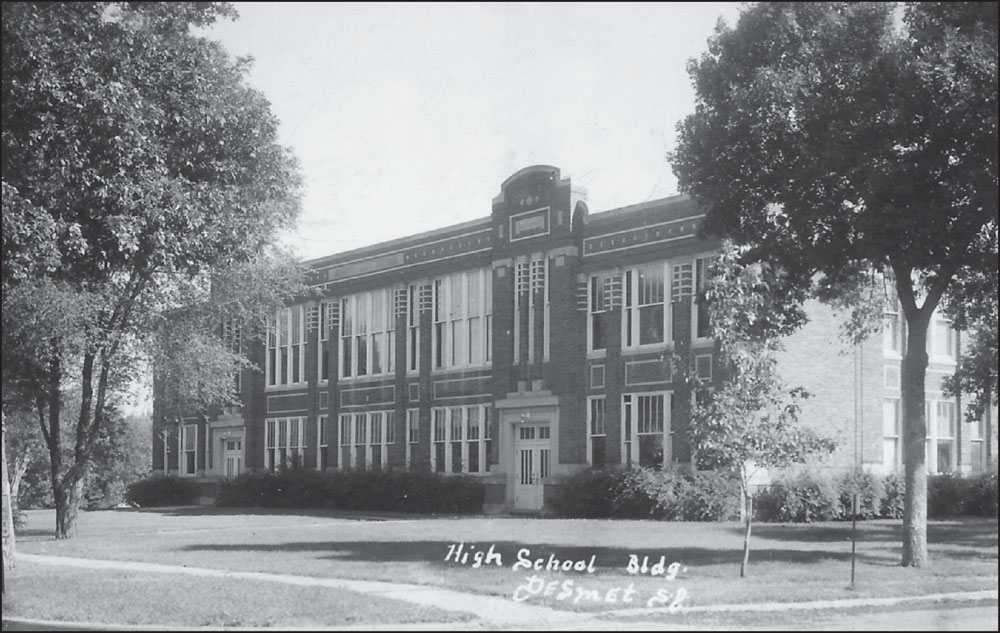
A new era of school history was taking place in the 1920s, when the public school moved from an old wooden building to a modern brick one. This brick structure was built in 1922 for the junior and senior high school students. It was razed in 1997 and replaced with an even more modern building in 1998.
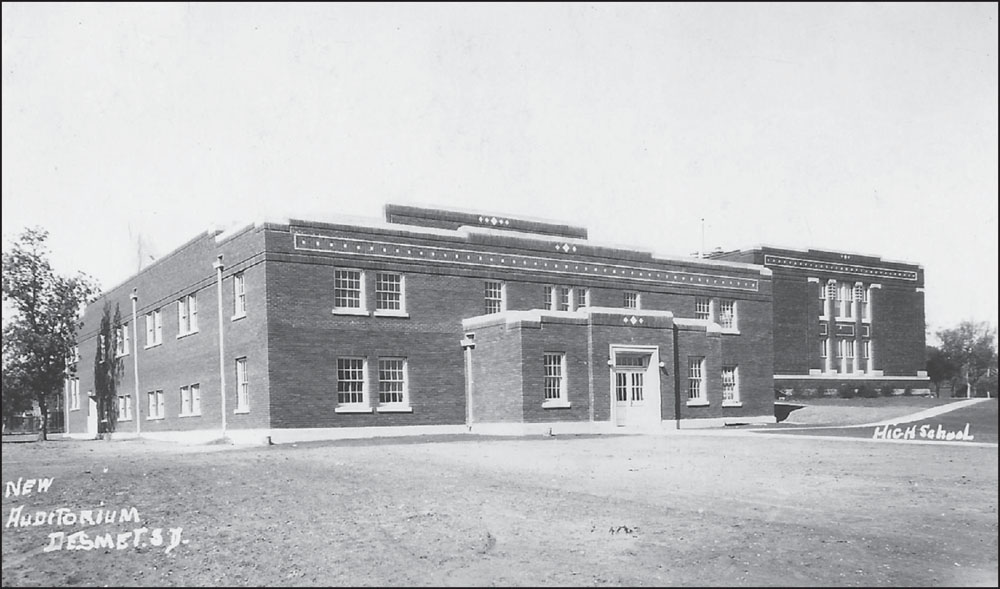
Cheers, boos, and hand-clapping can still be heard in the 1938–1939 WPA-built auditorium. The City of De Smet contributed $7,000 and had the use of three rooms; $18,000 was raised through bond sales, and the federal government contributed the rest. The National Guard used the auditorium for $75 a month. The first graduation exercise was held in the new auditorium in May 1939.
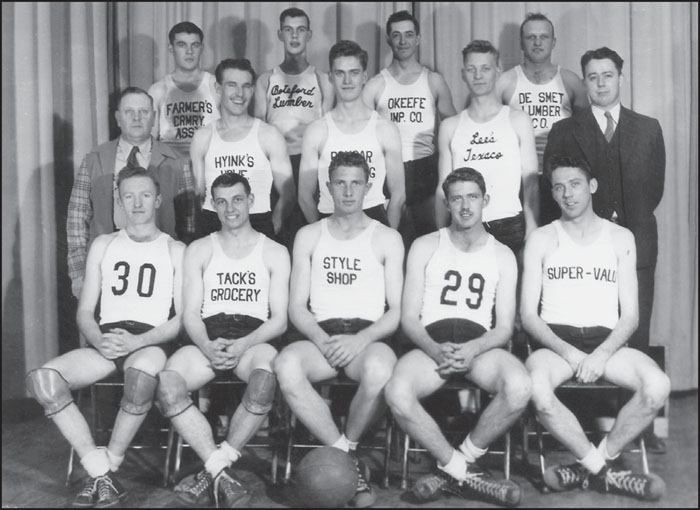
The businesses stitched on the 1946–1947 jerseys bring memories to some. Those pictured here are, from left to right, (first row) Bob Klinkel, Dick Coughlin, John Swenson, Bob Melstad, and Jim Melstad; (second row) assistant coach Charles Lindsey, Bob Cavanaugh, Glen Madsen, Norman Madsen, and coach Pat Hartnett; (third row) Jim Coughlin, “Tex” Myers, Bill Coughlin, and Barney Mahoney.
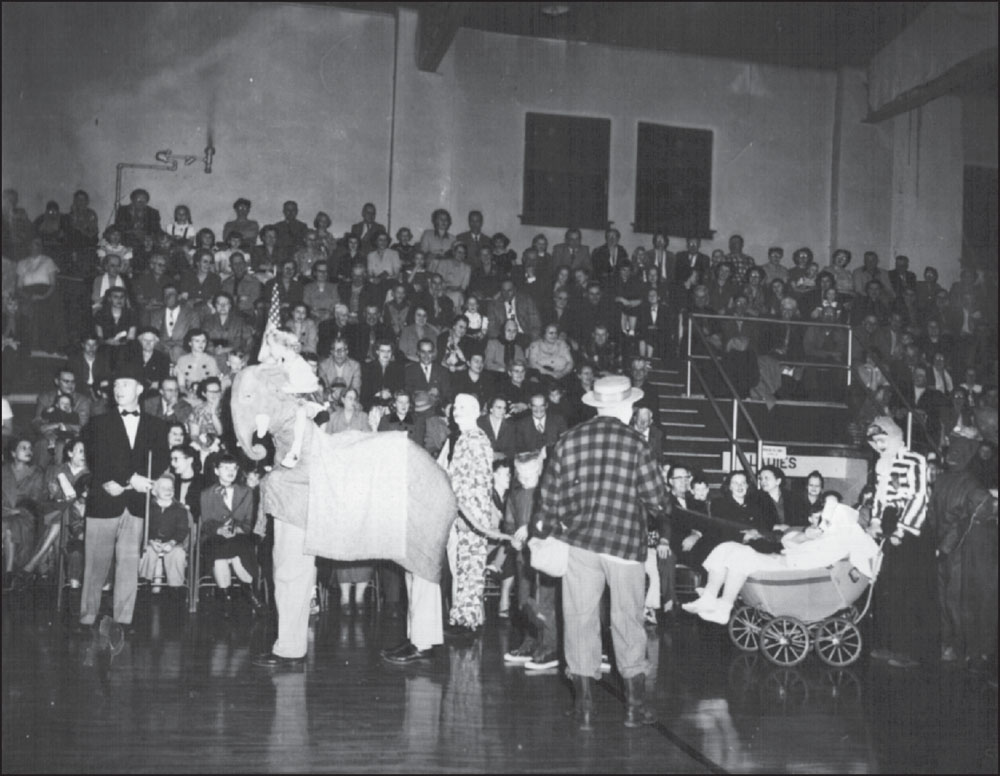
In 1957, crowds roared with laughter as the “trainer” (unidentified) put the “elephant” (Donald Schultz and Alan Wellman, respectively) through its paces. Nancy Schultz is riding on the shoulders of the “elephant.” These carnivals were yearly events sponsored by the PTA and always brought a great time to the school year.
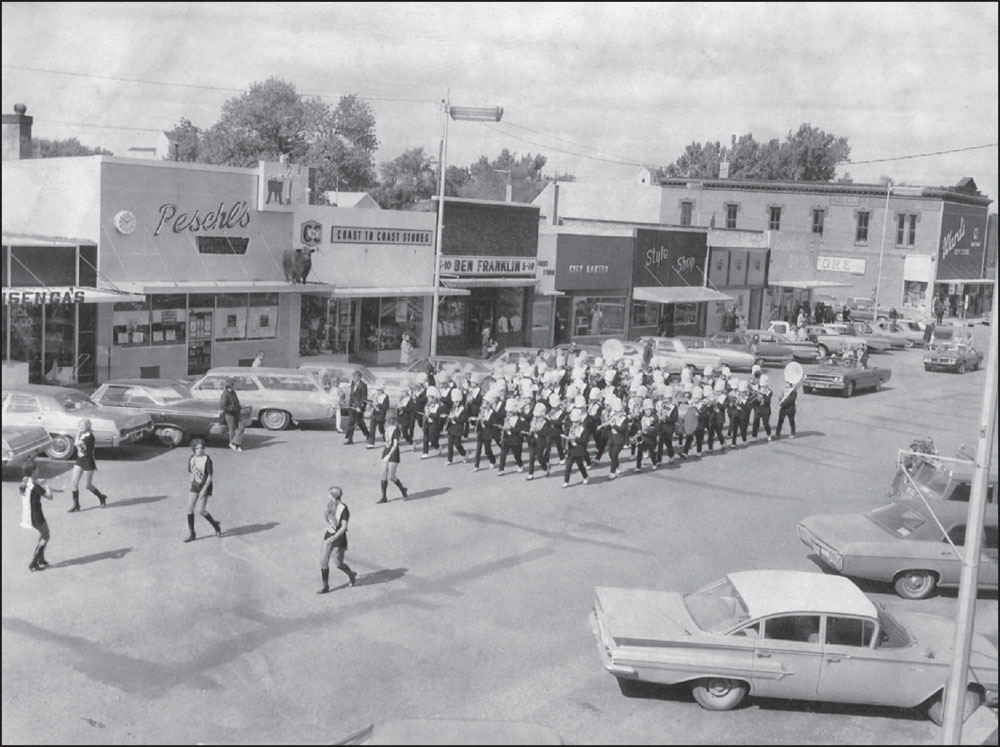
Huisenga’s, Peschl’s, Ben Franklin, City Bakery, Style Shop, Buchele Drug Store, and Ward’s Store all line the street as the De Smet High School Band leads the 1972 homecoming parade with the homecoming king and queen, Marvin McGune and Bergie Belzer, and their court immediately behind.
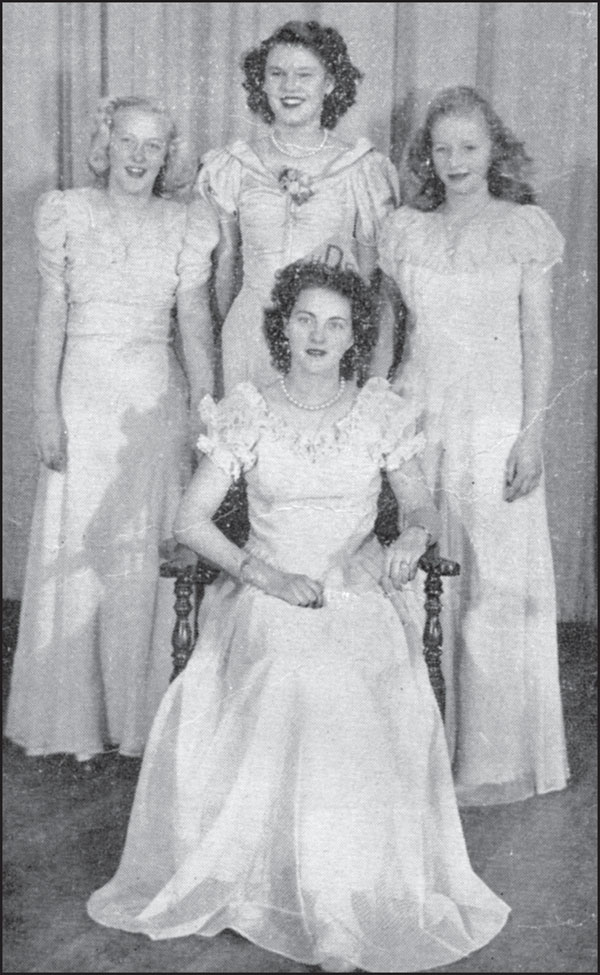
Queen Pearl Smith (Coughlin) reigns as the first homecoming queen for De Smet High School. The year was 1946; attendants are, from left to right, Stacia Larson, Marcine Brandner and Annie Smith. Pearl says she had to rush up to the high school office and make her own crown and the letter D to put in the center out of construction paper; she fastened it all with a paper clip.
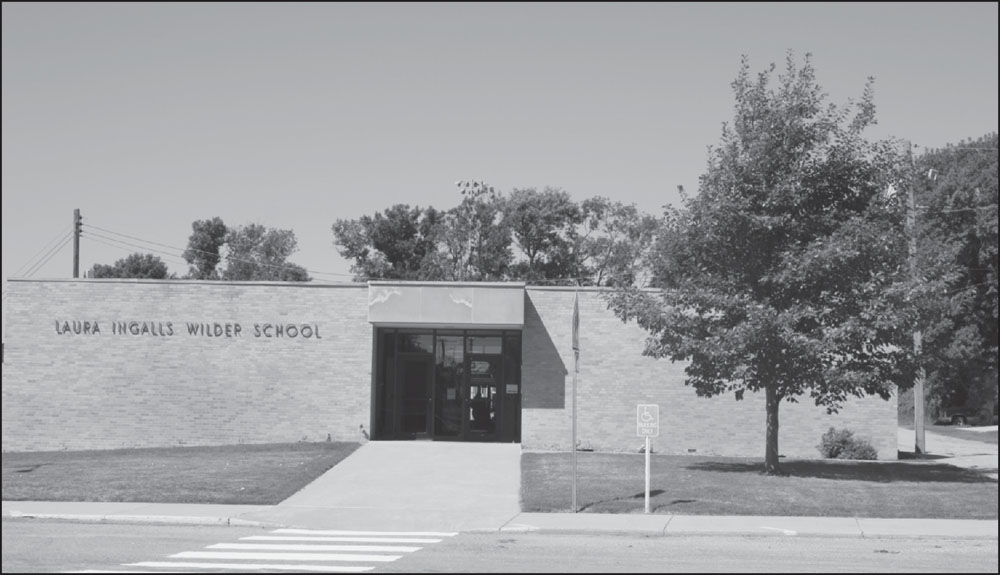
The Laura Ingalls Wilder Elementary School became a dream come true on March 12, 1963. An agreement with the City of De Smet allowed the school district to acquire the present armory and extend its classroom availability. This was an improvement over using rented rooms in the American Lutheran Church. The building houses kindergarten through fifth grade.
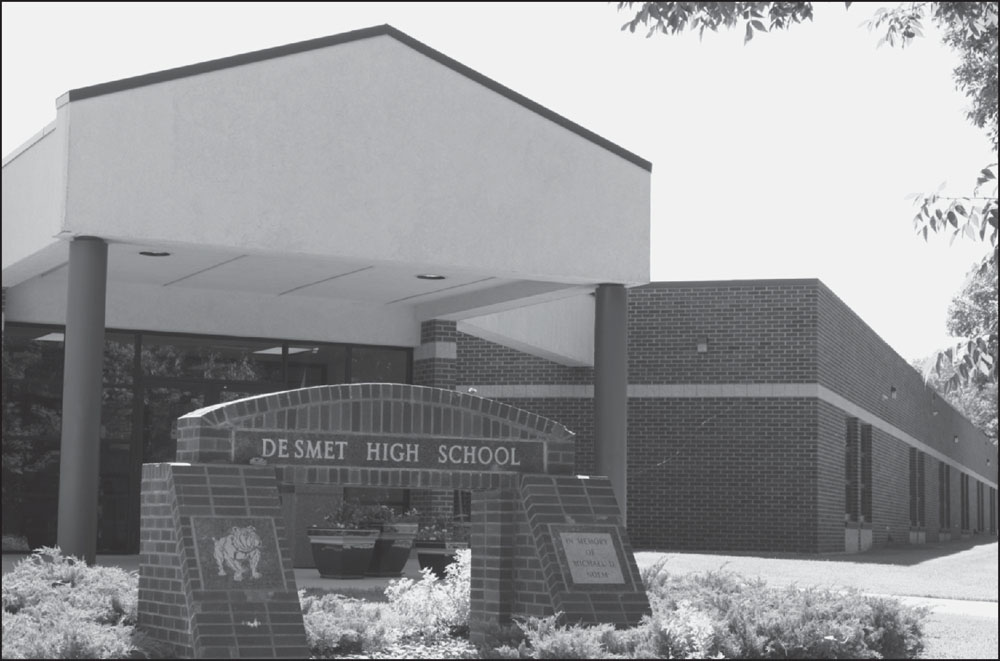
The residents of the De Smet area were always seeking to improve the quality of education for their children and to give them the best setting possible to acquire knowledge. The “grand old lady” of 1922 was demolished, and from its dust arose this new building in 1998. This school building now houses grades 6 through 12.


















